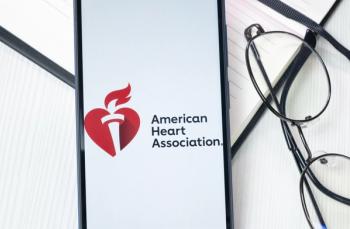
Racial, socioeconomic disparities in emergency management of unintentional ingestions among children
New research shows racial and socioeconomic disparities in emergency care for unintentional ingestions in children, highlighting treatment inequities.
Unintentional injuries, including trauma and poisonings, are the leading cause of death among children aged 1 to 4 years. A significant portion of these injuries is linked to unintentional ingestions, such as swallowing toxic substances or medications. According to recent research presented at the American Academy of Pediatrics 2024 National Conference & Exhibition in Orlando, racial and socioeconomic disparities continue to influence the way emergency departments handle these cases.
The study, titled “Disparities in the Emergency Evaluation and Management of Unintentional Ingestions in Preschool Children,” draws attention to the inequities in treatment provided to minority children, particularly Black children, in emergency departments. Researchers examined 4,411 cases of children under six who were diagnosed with unintentional ingestions between January 2013 and March 2024, highlighting significant differences in the way these patients were evaluated and managed based on their race and socioeconomic background.
Key findings
National Poison Control data from 2021 indicated there were 37 incidences of poison exposure per 1,000 children under 6 years, with poisoning deaths among minority children rising between 2010 and 2019. This trend highlights the urgent need to address treatment disparities.
The study’s findings revealed:
- Increased consultations for minority children: Black and non-white children were more likely to undergo social work consultations, Children Services Bureau (CSB) referrals, and urine drug screens (UDS) compared to white children. This disparity was seen regardless of the type of substance ingested, with non-white children having significantly higher odds of these evaluations (ROC: 0.78, 0.84, and 0.86, respectively).
- Pharmaceutical ingestions: Children who ingested pharmaceutical substances had higher odds of receiving a social work consult or a CSB referral (OR 8.3 and 9.0, respectively). Moreover, non-white children were disproportionately involved in cannabis ingestion compared to their white counterparts.
- Socioeconomic influence: Children from lower socioeconomic backgrounds, as measured by the Childhood Opportunity Index (COI), and those with public insurance had higher odds of a social work consult and CSB referral. In contrast, private insurance and an emergency department discharge were associated with reduced odds of these interventions.
- Racial biases in emergency department treatment: Even after adjusting for COI, insurance status, and severity of the illness, Black children had higher odds of receiving a social work consult (OR 1.8), a CSB referral (OR 2.8), and a UDS order (OR 2.3).
“This study is important in understanding where underlying bias exists in emergency departments and hospital management and where changes can be made to address this problem, thus providing equitable care for all children,” said Jennifer Allen, DO, FAAP, the study’s principal investigator. “These findings could be useful to health care workers in emergency departments to help develop a framework for standardized clinical decision making.”
Disparities extend beyond ingestions
The study’s findings are consistent with prior research on racial disparities in emergency department treatment. Previous studies have shown that minority children are less likely to receive adequate pain management for conditions like long bone fractures or appendicitis. For instance, research by Goyal (2015 and 2020) found that Black children are less likely to receive opioids or analgesics in the emergency department compared to white children, highlighting a pervasive issue in pediatric emergency care.
National trends
Between 2010 and 2019, the number of poisoning deaths among minority children increased significantly, according to research by West (2021). This increase, coupled with data from National Poison Control showing 37 poison exposures per 1,000 children under age six, underscores the need for targeted interventions to address these disparities.
Next steps
The study’s findings call for the development of a standardized framework for clinical decision-making in emergency departments to mitigate the influence of racial and socioeconomic biases. By addressing these disparities, healthcare providers can work toward ensuring that all children receive equitable, high-quality care regardless of their race or socioeconomic background.
“This isn’t the only research to find racial disparities in the emergency department,” Allen noted. “Disparity has been identified among different races regarding pain management for fractures and appendicitis in the emergency department.”
Reference:
Racial disparities exist in emergency department treatment of children with unintentional ingestions. Eurekalert. September 27, 2024. Accessed September 30, 2024. https://www.eurekalert.org/news-releases/1058460
Newsletter
Access practical, evidence-based guidance to support better care for our youngest patients. Join our email list for the latest clinical updates.








